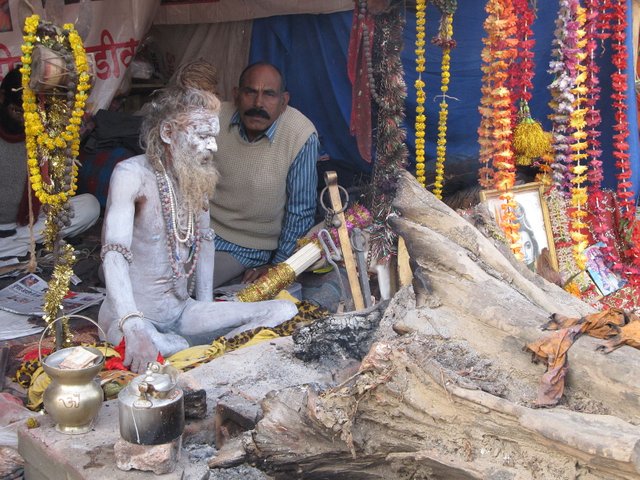Kumbh Mela:The Naga Sadhus are not just male; There are also female ascetic women: Part 2
• The Naga Sadhus play a central and symbolic role in the Kumbh Mela, making them one of the most recognizable and revered groups at the festival.
• Their presence reflects the spiritual essence, asceticism, and ancient traditions associated with Hinduism."
Who are Naga Sadhus?
• Naga Sadhus are Hindu ascetics and warriors who belong to various monastic orders called Akharas.
• The term "Naga" means "naked," signifying their renunciation of material possessions, including clothing, as a symbol of detachment from worldly life.
• The term "Naga" originates from Sanskrit, where it literally translates to "mountain," symbolizing a group of spiritual seekers who reside in the mountains or their surroundings, often in solitude, as they strive for spiritual enlightenment.
• They dedicate their lives to spiritual practices, self-discipline, and the pursuit of moksha (liberation).
1.Spiritual Guardians of Dharma
• Naga Sadhus see themselves as protectors of Sanatan Dharma (eternal order or Hindu way of life).
• Historically, they served as defenders of Hinduism, especially during invasions or when religious practices were threatened.
2.Leaders of the Shahi Snan (Royal Bath)
• The Royal Bath is the most important ritual of the Kumbh Mela.
• Naga Sadhus are the first to take the ceremonial dip in the sacred river, signifying the purification of sins and inviting other devotees to follow.
• Their procession to the river, accompanied by chants, music, and a display of traditional weapons, is one of the most spectacular and iconic moments of the Kumbh Mela.
• Among the sea of worshippers, the Naga Sadhus stand out.
Community of female Naga Sadhus, or Naga Sadhvi
• The Naga Sadhus are not just male. There are also female Naga Sadhus or ascetic women who dedicate their lives to spiritual pursuit and complete. renunciation of worldly existence.
• Much like their male counterparts, female Naga Sadhus sever all attachments to family and material possessions, embracing a life of asceticism. They devote themselves entirely to their spiritual path, leaving behind everything from their previous life.
• Female Naga Sadhus must undergo a rigorous period of brahmacharya, or strict celibacy, lasting anywhere from six to twelve years, as a prerequisite for initiation into the order.
• In pursuit of spiritual enlightenment, they frequently embark on intense periods of sadhana, or profound meditation, often seeking solitude in remote locations like caves, forests, or mountains.
Unlike male Naga Sadhus, female ascetics do not remain unclothed.
Instead, they wear an unstitched saffron cloth called "Ganti" and are distinguished by their dreadlocks and the tilak on their foreheads.
Female Naga Sadhus hold a revered position within the community. They are addressed as "Mata" (mother), a title reflecting their esteemed role.
Thank you for reading the post.
